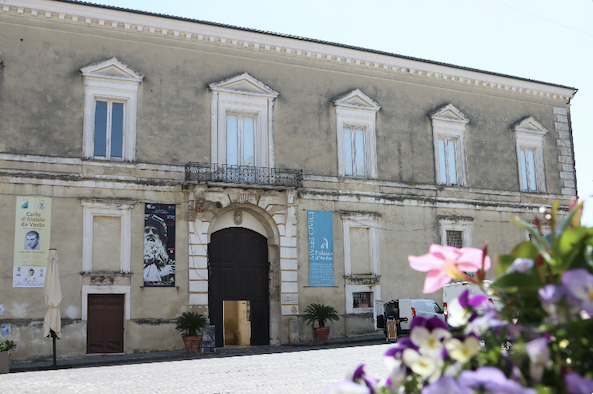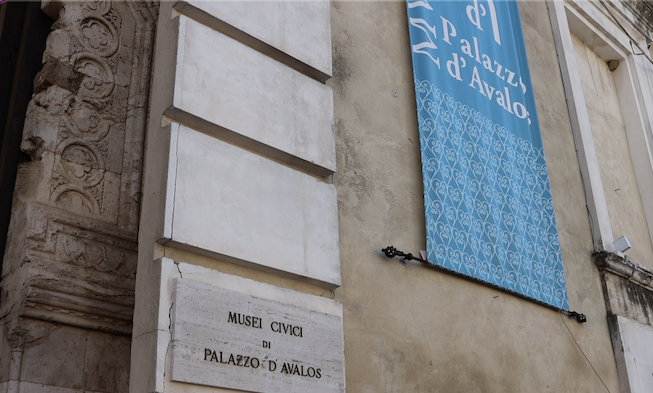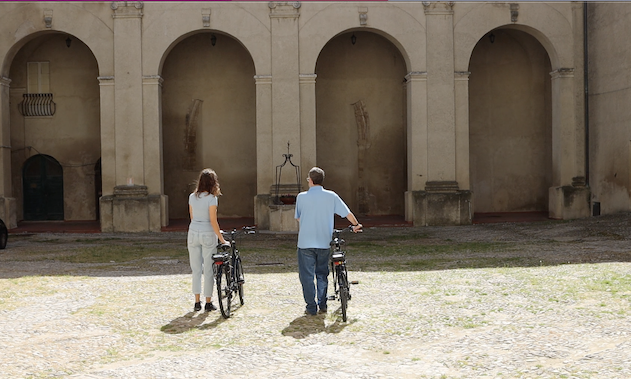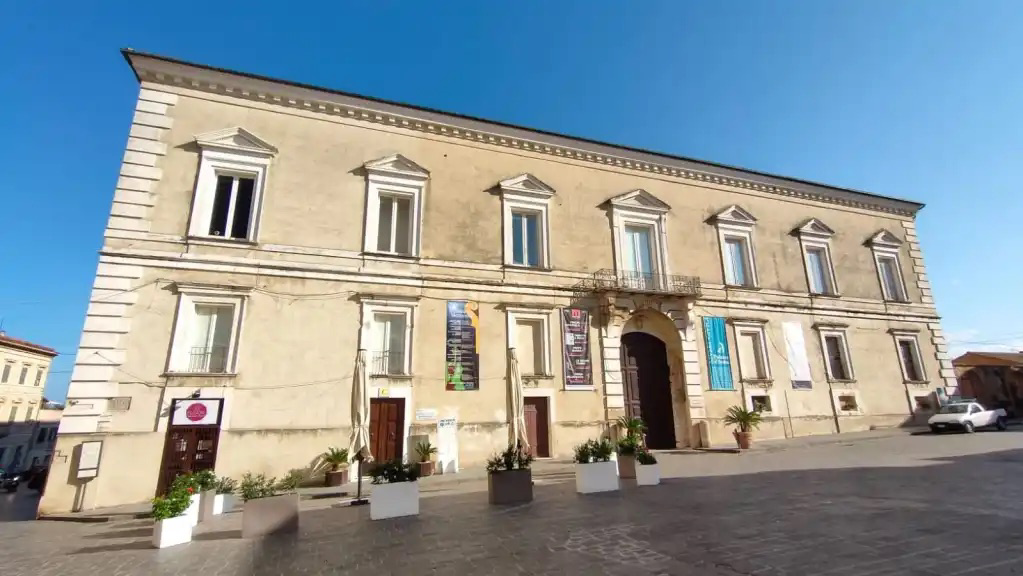Palazzo d'Avalos
Home to the Archaeological Museum, the art gallery, and the enchanting Neapolitan garden
Built by the Lord of Vasto, Giacomo Caldora, around 1427 on the gardens that formerly belonged to the Augustinian convent, Palazzo d’Avalos became the residence of the Marquises of Avalos in 1496. The d’Avalos family maintained the late Gothic structure of the palace, still visible today in some details uncovered during recent restorations, but they also expanded and enlarged the building, which became the center of their power.
Unfortunately, in 1566, the palace was set on fire by the Ottomans who had entered the city to plunder it under the orders of Piyale Pasha. The Marquises of Vasto rebuilt it in its current form a few years later, starting from the west facade facing Piazza Lucio Valerio Pudente. This facade is undoubtedly the most architecturally significant and recall the 16th-century style of Roman palaces.
Marquise Cesare Michelangelo d’Avalos made significant improvements to the palace, including the addition of a theater on the ground floor and the monumental staircase that leads to the art gallery today. In the second half of the 18th century, the heirs, probably with the assistance of architect Mario Gioffredo, who probably was also the designer of the Madonna del Carmine church, arranged the north side of the palace.
At the end of the century, the loggias and terraces on the side facing the sea were renovated, as well as the Neapolitan-style garden. This garden is perhaps the most interesting feature of the complex today, with its pergola supported by brick columns and Neapolitan maiolica tiles, offering enchanting views of the Gulf of Vasto and architectural remnants of the original palace, including a beautiful Gothic flamboyant “bifora” window.
After the end of the Marquisate, declared in 1808, the d’Avalos family retreated to Naples. The palace was sold to private owners and divided into apartments and shops. For many years, a cinema was hosted in its theater. In 1974, it was mostly acquired by the municipality of Vasto and converted into a museum. Today, it houses the Archaeological Museum, the Museum of Ancient Costumes, and the art gallery. The Neapolitan garden is part of the museum visit route but also hosts various summer events. The courtyard of the palace occasionally serves as a venue for concerts.
The palace was nearly completely restored by the municipality of Vasto in the 1990s. However, the northeastern corner, with the large terrace overlooking the sea, still belongs to private owners. Therefore, if you ever wished to live in Vasto in the palace of its Marquises, know that it is still a dream that can become true!
The Palazzo d'Avalos is in our itinerary:
THE D'AVALOS CAPITOL
The proposed stages:
- Palazzo d’Avalos
- San Francesco da Paola
- Chiesa del Carmine e Arcivescovado
- Church of Sant’Antonio
- Collegiata di Santa Maria





